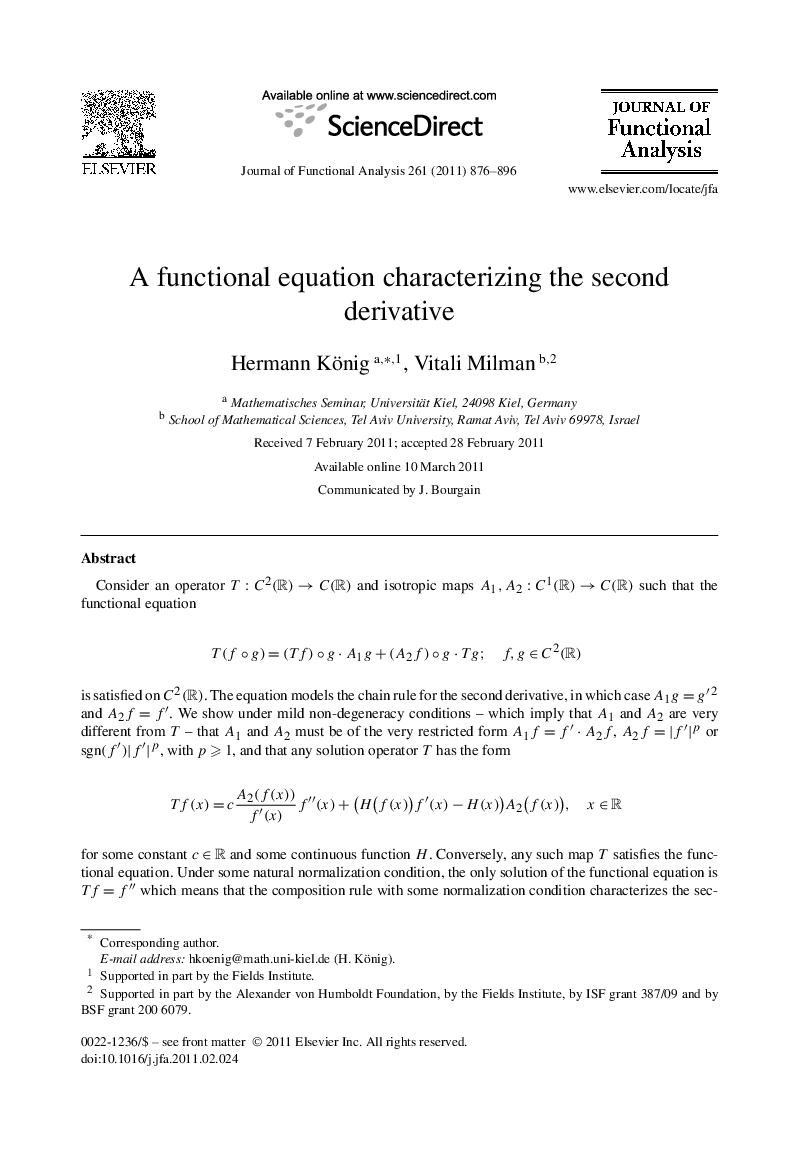| Article ID | Journal | Published Year | Pages | File Type |
|---|---|---|---|---|
| 4590790 | Journal of Functional Analysis | 2011 | 21 Pages |
Abstract
Consider an operator T:C2(R)âC(R) and isotropic maps A1,A2:C1(R)âC(R) such that the functional equationT(fâg)=(Tf)âgâ
A1g+(A2f)âgâ
Tg;f,gâC2(R) is satisfied on C2(R). The equation models the chain rule for the second derivative, in which case A1g=gâ²2 and A2f=fâ². We show under mild non-degeneracy conditions - which imply that A1 and A2 are very different from T - that A1 and A2 must be of the very restricted form A1f=fâ²â
A2f, A2f=|fâ²|p or sgn(fâ²)|fâ²|p, with p⩾1, and that any solution operator T has the formTf(x)=cA2(f(x))fâ²(x)fâ³(x)+(H(f(x))fâ²(x)âH(x))A2(f(x)),xâR for some constant câR and some continuous function H. Conversely, any such map T satisfies the functional equation. Under some natural normalization condition, the only solution of the functional equation is Tf=fâ³ which means that the composition rule with some normalization condition characterizes the second derivative. If c=0, T does not depend on the second derivative. In this case, there are further solutions of the functional equation which we determine, too.
Related Topics
Physical Sciences and Engineering
Mathematics
Algebra and Number Theory
Authors
Hermann König, Vitali Milman,
